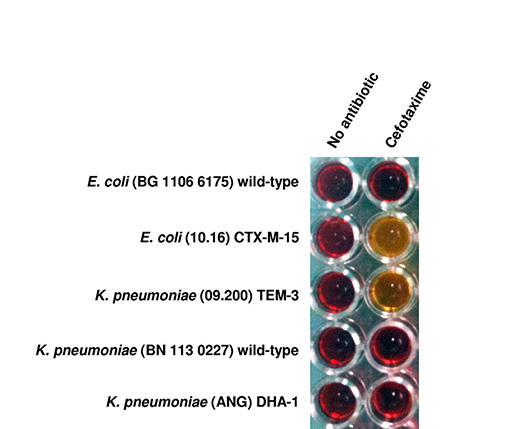4.3.4 The Nordmann/Dortet/Poirel test
The Nordmann/Dortet/Poirel (NDP) test can detect the presence of ESBL-producing bacteria in blood samples in less than two hours (Nordmann et al., 2012). As you might remember from Week 4, ESBLs are a major determinant of resistance to cephalosporin antibiotics. The presence of ESBLs in a bacterial strain can be used to diagnose a cephalosporin-resistant infection. The NDP test detects the enzyme activity of ESBLs in the sample.
What enzymatic reaction do ESBLs catalyse?
Recall from Week 3 that β-lactamases destroy β-lactam antibiotics by hydrolysing the β-lactam ring.
When cefotaxime (a third-generation cephalosporin) is hydrolysed by ESBLs, it results in

